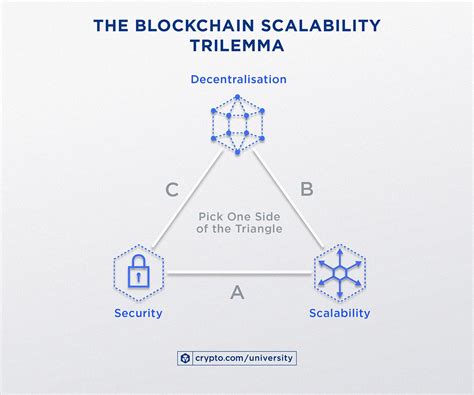Title: Unlocking full potential of cryptocurrency with blockchain scalability: Challenges and Solutions
Entry
The rapid development of the crypto currency has changed the way of thinking about money, finance and trade. With millions of users around the world, crypto currencies, such as Bitcoin, Ethereum and others, democratized access to financial services, have provided new models and business opportunities. However, one significant challenge that these resources in the emergence faced is scalability – the ability to effectively process a large number of transactions.
What is Blockchain scalability?
Blockchain scalability refers to the blockchain network capacity to in a timely one support a large number of transactions without consecration of efficiency or security. Includes the design and implementation of blockchain protocols, algorithms and architectures that allow network knots to check and process the temporary transactions comparable to traditional financial systems.
Challenges with Blockchain Scalabine
- Transaction Volume : The number of transactions processed every second can be overwhelming for most blockchain networks. For example, the Blockin block time is only 10 minutes, which means that it has to serve as tens of thousands of transactions per second.
- Network overload : A large amount of transactions can lead to an overload of the network, reducing total performance and network safety.
- Delay : slow transaction processing time can cause significant delays for users who can experience long waiting periods before confirming their transaction.
SOLUTIONS OF BLOCKCHAIN scalabin
- Proof of work (Pow)

: POW is one of the most common consensus algorithms used in blockchain networks. However, it has limitations in large quantities of transactions, as it requires considerable computer power to confirm the transaction.
- Proof of rate (POS) : POS is an alternative algorithm of the consensus that uses a voting system to select a validator. Although it offers better safety than POW, it can be slower and greater energy due to the need to maintain a validator or cryptocurrency table.
- Delegated Palika (DPO) : DPO combines elements and POS and them, allowing knots to vote for the next Walider without direct token posture.
- Sharding : Sharding is a technique that blockchain divides into smaller, independent networks called Shards. This allows any fragmentation to process transactions on its own, reducing the embolism and improvement of general scalability.
- Quantum resisten to calculation : Since quantum calculation is increasingly common, it is necessary to develop algorithms resistant to its impact on traditional encryption methods used in blockchain networks.
Best Scalability Blockchain
- Optimize consensus algorithms : Choose consensus algorithms that are optimized for high transactions and energy efficiency.
- Implementation of Sharding : Blockchain Shard to smaller networks to reduce the embolism and improve scalability.
3.
- Watch the network performance : Follow the network performance regularly and adjust algorithms or architecture if necessary to ensure optimal scalability.
app
Blockchain scalability is an important aspect of the development of the cryptocurrency of the currency, allowing to create more effective, safer and scalable nets. Understanding the challenges and solutions related to blockchain scalability can build innovative products that satisfy growing demand for cryptocurrencies and other decentralized resources.
Leave a Reply